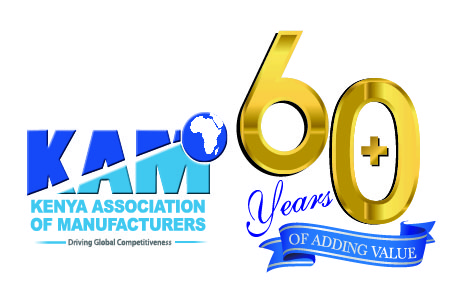Reinvigorate textiles and apparel sector to create jobs
By Anthony Mwangi
This might surprise you, but Kenya is one of the global suppliers of big fashion brands in America.
In fact, Kenya is the largest exporter of garments under the African Growth and Opportunity Act (AGOA) program. We pride ourselves on manufacturing for big names such as H&M, Levi’s, JC Penny, Wrangler, and Otto, among others.
This demonstrates that local industries can produce high-quality products for local and international markets.
Our textile and apparel sector plays a crucial role in the economy due to three main reasons. First is the fact that access to clothes is a basic need, second is the strong linkage between manufacturing and agriculture in the farm-to-fashion value chain, and third is the ability of the sector to create gainful mass employment within a short period.
Despite the local sector making a mark in the global space through our apparel exports, accounting for approximately Ksh. 51 billion, our imports remain high. In 2021, Kenya imported textiles and apparel products, including fibres, yarns, fabric, and ready-made apparel, worth about Ksh 85 billion. Furthermore, we imported second-hand clothes worth 19 billion in the same year.
This calls for the urgent need to reinvigorate the sector. By doing so, we will provide citizens and export markets with high-quality, affordable, ready-made garments from locally produced raw materials whilst creating employment along the value chain. Additionally, the high involvement of MSMEs in the sector provides a golden opportunity to infuse creativity and diversity in our fashion in addition to the agility to drive fashion trends. A deliberate structure to grow and develop SMEs would be a sure bet to drive this.
Local industry is committed to increasing the manufacturing sector contribution to GDP from the current 7.2% to 20% by 2030 in its Manufacturing 20by30 plan. To implement this plan, the Kenya Association of Manufacturers (KAM) and the Ministry of Trade, Investments and Industry kicked off sector deep dives to get insights on the opportunities that manufacturing value chains provide and how best to plug into each.
An analysis of the local textiles and apparel sector calls for urgent intervention – primarily to close the gaps to run an efficient farm-to-fashion value chain. Linkages between the textiles and apparel sector with other sectors, including agriculture, energy, finance, chemical, packaging, retail and logistics, can create a huge economic ripple effect to create a wow factor in the economy.
Kenya is now a net importer of cotton, but enormous opportunities to create over 200,000 direct jobs in cotton farming exist. Production of other fibres such as silk and wool presents numerous opportunities to tap into the premium markets with the fibre-to-fashion sector, leading to more benefits to the local economy. For instance, we currently produce 1.2 million kilograms of wool annually. By increasing farmers involved in wool farming from the current 8,000 to over 20,000, we can triple wool production whilst creating new jobs.
In terms of yarn and fabric supply, the utilization capacity of spinning mills stands at 39%, supplying barely 7% of the yarn and fabric market demand. We have an opportunity to increase the output of the mills and yarn produced, which can be supplied to textile mills and over 300 MSMEs engaged in Knitwear. Furthermore, by bridging this gap, the country will not only fill the 93% fabric demand that is currently supplemented through imports but also venture into the fabric export market, including East Africa Community (EAC), Common Market for Eastern and Southern Africa (COMESA) and Africa Continental Free Trade Area (AfCFTA).
In comparison to the Ksh 252 trillion global market, Kenya’s apparel exports are just a drop of water in the ocean, at about Ksh. 51 billion. Herein lies an opportunity to join the biggest garment exporters, such as Bangladesh, Vietnam, and China, which have enhanced their capacity to supply global markets. Kenya can borrow best practices from Bangladesh, a giant exporter of textiles and apparel. Bangladesh’s apparel sector employs 5 million people, whereas its exports amount to Ksh 5 trillion compared to our apparel sector, which employs 50,000 people and exports finished products amounting to Ksh 51 billion.
Kenya prides itself on having a sustainable sector compared to other manufacturing hubs globally. As out shoring from the east happens, Kenya needs to position itself with the right policy environment and supportive infrastructure to house the next global textiles and apparel manufacturing hub.
The writer is the Chief Executive of Kenya Association of Manufacturers and can be reached at info@kam.co.ke.
Looking for elevation? KAM lifts you up.
- Direct technical assistance
- Capacity building programmes
- Networking and mentorship
- Industry insights & analysis
- Trade & export development services
